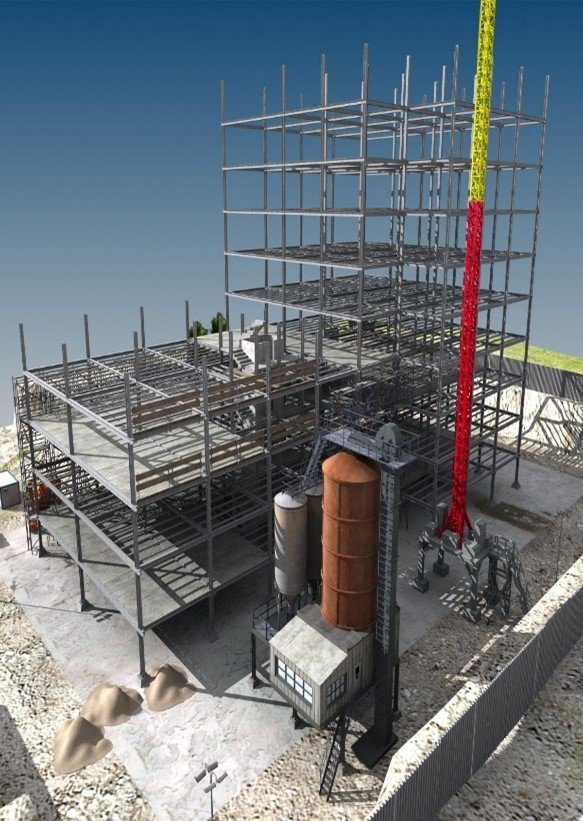Means & Methods Engineering Resources
Means & Methods Engineering offers resources for you to learn more about what we do, the services we provide and general knowledge to improve your project.
Definitions
Means and Methods - labor, materials, temporary structures, tools, construction equipment, and the manner and time of their use, necessary to complete the intent of a contract.
Cost Influence Curve - a diagram representing the influence of decisions based on a specific time during a project and its impact.
Feasibility - identify a potential beneficial business opportunity and perform initial analysis, scoping and order of Magnitude Estimate to determine whether the opportunity is worth further investigation. CII - Feasibility (construction-institute.org)
Conceptual Phase -includes the initial project general arrangements, P&ID’s, and the beginning of construction execution planning (sequence, cost, commodities, labor strategy) based on the initial design deliverables.
Front End Planning/Front End Loading - the time frame of a project where the business case, feasibility study, conceptual engineering, cost estimates, and constructability are performed prior to the approval of full project funding.
Construction Monorail - supports an overhead underhung lifting device and load commonly used to move materials from inside boilers or other areas where overhead crane access is limited.
Running Sheave - a sheave that rotates as the load block is lifted and lowered (“Overhead Underhung and Stationary Hoist” ASME B30.16-2022)
Fleet Angle - the maximum angle at which the rope leads onto the drum (Cranes and Derricks Fourth Edition; Shapiro and Shapiro).
Winch - assemblage of one or more winding drums mounted on a frame (Cranes and Derricks Fourth Edition; Shapiro and Shapiro).
Bull Rigging - the use of chain falls, come-a-longs, and skates or other hand rigging equipment to drift or “tarzan” pipe and other equipment to locations not accessible by overhead cranes.
underhung hoist - trolley hoists or hoist suspended from trolleys traveling on the lower flanges of beams or similar hoist thar hook- or lug-suspended (“Overhead Underhung and Stationary Hoist” ASME B30.16-2022)
ASCE 37 Design Loads on Structures during Construction-manual from American Society of Civil Engineers providing minimum design loads during construction of buildings and other structures.
Total Cost Claims (TCC) -normally last resort, based on U.S. common law, requiring four elements to be met for US court consideration.
Activity Ghosting - creating new activities for existing scope after the schedule baseline is generated to illustrate no variance from previous schedules.
Critical Path Method (CPM) - a group of activities defined in a construction schedule whose starts and finishers are dependent on one another and take the longest duration to complete in the project.
Claim - request or assertion by one party to the other party for an entitlement or relief under any clause of conditions or otherwise in connection with, or arising out of, the contract or the execution of the work. (Construction Management Institute of the USA)
EOT - Extension of time, usually reference in a change order or claim.
Scope of Work - document(s) or electronic file(s) that defines the technical requirements to be completed for a construction project, agreed upon between the seller and buyer, and incorporated into a contract.
Constructability - the optimum use of construction knowledge and experience in planning, design, procurement, and field operations to achieve overall project objectives. (CII, “Constructability: A Primer” 1986)
Outage/Shutdown/Turnaround - a planned or unplanned time frame a facility or portion of a facility is non-operational to allow for repairs, modifications, maintenance, or installation of new equipment.
Applied Load (s) - external force(s) action on a structural member or machine element due to the rated load, dead load, and other forces created by the operation and geometry of the lifting device (ASME BTH-1-2020 Design of Below-the-Hook Lifting Devices)
Lifting Attachment - a load-supporting device, such as a lifting lug, pad eye, trunnion, or similar appurtenance that is attached to the lifted load, is designed for use with the specific load to which it is attached. (ASME BTH-1-2020 Design of Below-the-Hook Lifting Device)
Tilt-Wall - the design, construction, and erection of concrete walls poured in the horizontal position and erected to a vertical position through the evaluation of Mmax and flexural stresses inducted by the rotating of the panel by a crane and rigging components.
Lift Insert - manufactured components placed in tilt-wall pours for connections to rigging components for lifting and tilting wall panels to a vertical position.
MCR - moment causing flexural cracking of the concrete section, (in-lbs; N-mm) (“Design Guide for Tilt-Up Concrete Panels” ACI 551.2R-15)
Brace Insert - manufactured components placed in tilt-wall pours for connections to temporary bracing and transfer of load once the panel is erected vertically.
Temporary Bracing - structural members spanning on an angle from a support (ex. deadman, slab, fdn) to an unsupported wall during the erection sequence of a project.
Links/Articles
The Art of the Scope, Revision 0; Issued 7/1/2023; By Jon Alberson, P.E.
This article cover specific information to include in an effective SOW, how the dimension of Time impacts the format of the SOW, and the relationship with other documents in the inquiry package. Several common issues with SOW’s will be discussed. This guide strengthens issues scoping ability to efficiently develop an effective SOW.
SC&RA Workshop: strength in numbers - Crane & Transport Briefing
This Article discusses Jon Alberson’s and Brooks Nunley’s Below the Hook presentation at SC&RA 2025 Crane & Rigging Workshop







